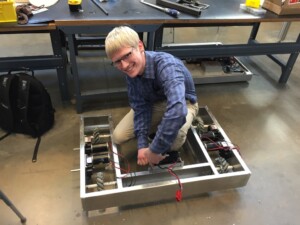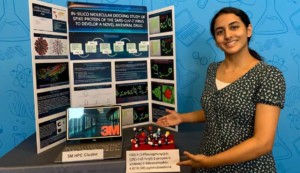Project Lead The Way Continues Leading the Way in Blended STEM

This blog is an update to an earlier blog Blended STEM: Project Lead the Way published April 22, 2013.
Project Lead The Way (PLTW) is a provider of STEM curriculum for U.S. elementary, middle, and high schools. More than 6,000 schools in all 50 states and Washington, D.C., offer PLTW’s curricular programs. Project Lead the Way offers many programs, including Engineering, Biomedical Science, and Gateway. The Engineering program includes eight full-year courses, covering topics ranging from the engineering design process to computer-aided design and circuits. The Biomedical Science program is a series of four year-long courses that “explore human medicine, bioinformatics, cell biology, genetics, disease, and other biomedical topics” through activity-, project-, and problem-based learning.
PLTW is adding two new programs to its curricular offerings. During the 2013-14 school year, the organization pilot-tested PLTW Launch – a program designed for students in grades K-5 – in 43 schools across the U.S. The program is available to all elementary schools for the 2014-15 school year. The second new program is a computer science pathway for high school students. The first course – Computer Science and Software Engineering – is available for 2014-15 as well. In addition to new curricular offerings, PLTW is continuously improving its blended STEM offerings with updates to the online and hands-on learning experience.
Dr. Vince Bertram leads the team behind the aggressive agenda. Bertram, who has been CEO for three years, is a former Indiana high school principal and school district superintendent who has been an educator for more than 20 years. Since joining PLTW, the organization is growing by about 20% annually–adding over 1,000 programs in 2013.
PLTW operates on three “pillars”: world-class curriculum, high quality professional development, and a growing and engaged network of universities and companies. PLTW develops its entire curriculum collaborating with industry experts and professors from leading universities in an effort to stay current and reflect best practices. “Hands-on, project-based learning is absolutely critical for students to be prepared for college and career success,” Bertram said. “It equips students with vital critical-thinking, problem-solving, and collaboration skills and shows them the relevancy of their learning to the world around them.”
Many equipment and software platforms help power the hands-on classroom experiences, including VEX Robotics. Students who take PLTW often apply their robotics knowledge by participating in VEX Robotics Competitions, the largest and fastest growing middle and high school robotics competition.
Teachers who teach PLTW courses benefit from a network of over 50 university and research institutions that host professional development each summer. In addition to training, university partnerships provide college credit opportunities, recruiting and scholarships for students who take PLTW courses.
Another new development is the Innovation Portal, developed by PLTW with support from the Kern Family Foundation, the University of Maryland, and NSF. It’s a portfolio site (open to all schools) that supports rubric-based scoring of original design and problem-solving work. The intent is to support e-portfolio use by university in admissions.
While foundation support has been key for PLTW growth, schools pay a fee to offer the PLTW curriculum, making the organization self-sustaining. Schools offer the programs; they stay, because it works. Dozens of studies about PLTW are summarized in a paper by Dr. Robert Tai. The studies suggest that PLTW students take more math and science, get better grades, go to college and major in STEM fields at higher rates than other students.
Schools that join PLTW can now access curriculum virtually. Last year, PLTW chose Canvas as its learning management system, a decision likely to be a turbo booster for Canvas in K-12.
As noted previously, PLTW moved to Indianapolis in the fall of 2011 with some encouragement from then- Governor Mitch Daniels and Superintendent Tony Bennett. With more than 400 participating schools, Indiana is one of the largest PLTW states.






0 Comments
Leave a Comment
Your email address will not be published. All fields are required.